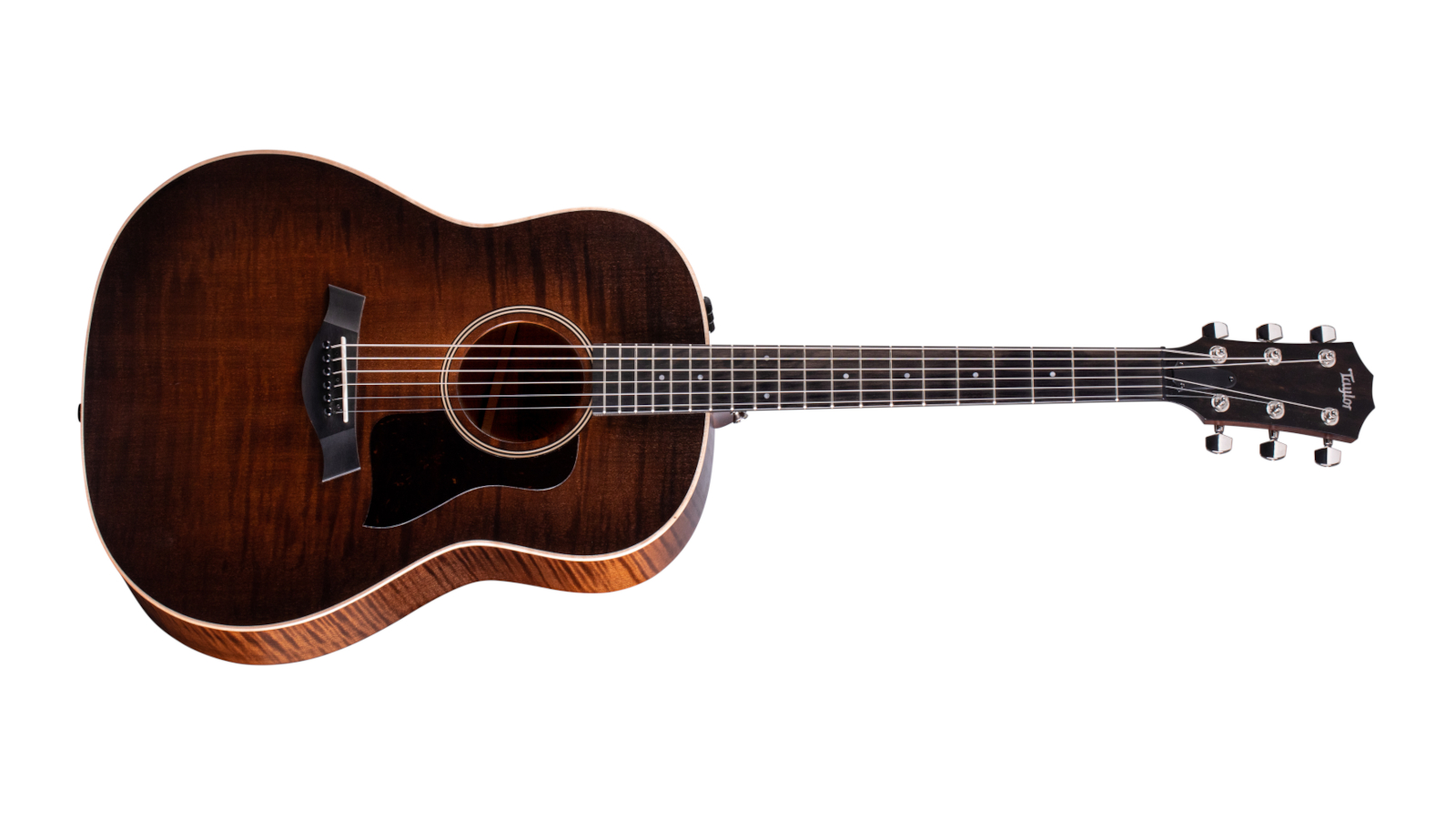GuitarPlayer Verdict
Venturing to a place that’s downright funky and down home on the back porch this acoustic is a giant step away from traditional Taylor turf.
Pros
- +
Hearty, earthy tone with harnessed highs
- +
Smokey smooth look and feel
- +
A well-crafted workhorse that can take a wallop
Cons
- -
Musicians should understand this model is designed with a less-vibrant, more lo-fi tone and duller string action, and is aimed at traditionally non-Taylor players
You can trust Guitar Player.
“The least Taylor-sounding guitar you’ve heard to date,” is how Taylor presented the AD27e Flametop to GP before sending a review unit and connecting us with designer Andy Powers for a thorough explanation of his latest creation. Needless to say we were intrigued.
So what exactly is this new outlier? The AD27e Flametop joins the American Dream team, which Powers describes as “the cup of black coffee of guitars. ‘Just get the job done.’”
The worker-bee line was introduced at the height of Covid’s first wave, in the summer of 2020 via the original AD27e, which featured a Grand Pacific body made of solid sapele back and sides with a mahogany top.
The primary difference here is right in the title.
“Flametop” refers to the flame maple used for the top, back and sides. Right off the bat this isn’t only unlike any other Taylor, it’s also very unusual for an acoustic guitar.
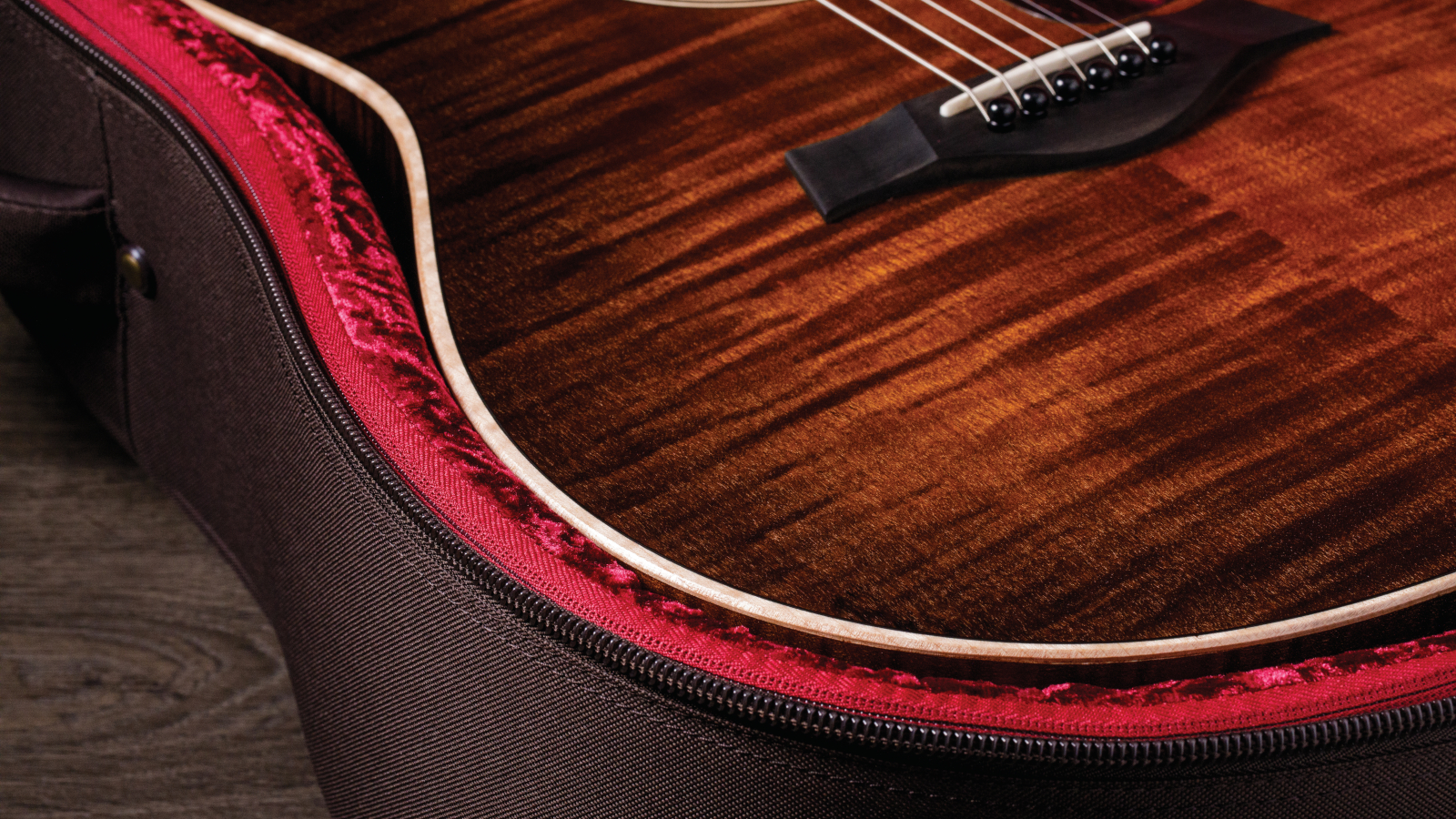
“Maple isn’t typically used as a topwood because it has a high damping factor, meaning it responds kind of slowly and tends to sluff off some of the delicate frequency response,” Powers explains.
“Normally that kills the guitar, and a maple top is surely not the choice for a high-fidelity instrument, but in this case I’m after a dustier sound. In the context of V-Class bracing, the rules start changing. You can adapt the architecture to allow a very different kind of response.
“‘Flaws,’ such as where the intonation starts to fall off and the resonance becomes too unpredictable, can be re-thought. You can turn a hindrance into a help.”
I wanted to create a sound that I can’t find in any other new guitar, along with modern performance and reliability
Andy Powers
The Flametop definitely has a distinctive sound. The tone is dry and on the dark side, especially for a Taylor. There aren’t a lot of complex overtones but rather a flat, fundamental tone focused squarely in the middle range.
The Flametop comes equipped with D’Addario Nickel Bronze strings, which are a significant factor in this earthy-sounding equation. Fitting for the Flametop, they are designed to sound less brilliantly metallic, letting the wood speak for itself.
The guitar is also equipped with Taylor ES2 electronics. To our ears, the Flametop sounded a tad lighter and more airy when using an amplifier. We simply rolled the treble back a bit on the guitar.
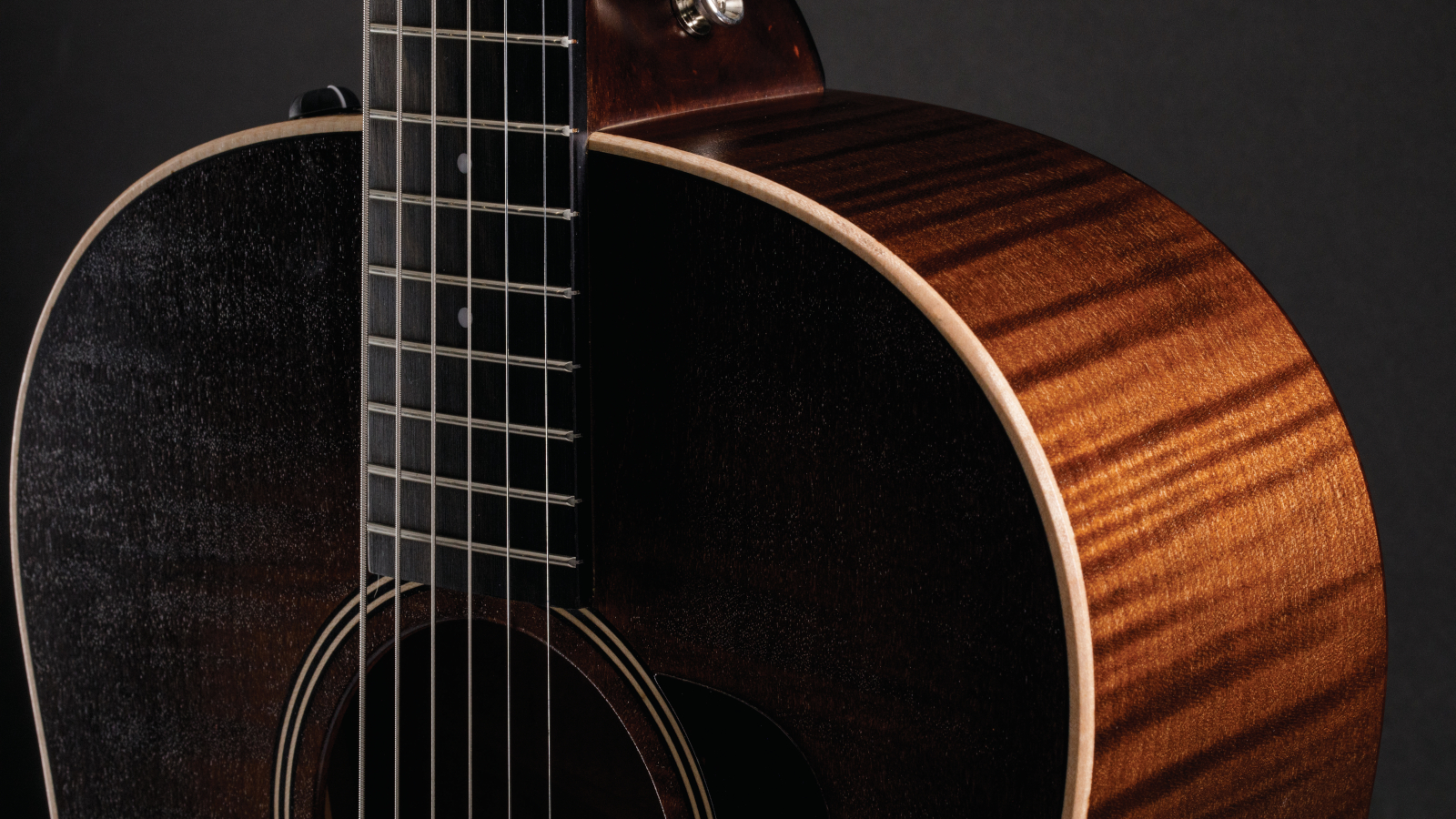
Somehow, the AD27e Flametop makes you play differently. The neck profile is pretty much modern standard stuff, so it doesn’t seem to be coming from there, although it’s worth mentioning that the neck is made of eco-friendly farmed eucalyptus, which Powers describes as “more akin to rosewood than ebony.”
The Nickel Bronze strings are surely another factor. They feel and sound worn-in, even when they’re brand-new. And we feel they somehow slow you down on the neck. But there’s more to it than that: It’s the maple top’s response that just makes you want to bang away!
The Flametop begs to be strummed aggressively with a thick pick, cowboy-style. It’s a no-frills, broken-in and practically road-worn tone that lends authenticity to blues.
“Maple is one of the great hopes of instrument building because it’s both very traditional and very modern," Andy Powers tells us. "Going back centuries, every good violin that’s ever been made was maple and spruce. I’ve used maple a lot on electric guitars because its mechanical characteristics are appropriate for the design, and it’s a great topwood for archtop guitars.”
When we mentioned the Flametop feeling like some new version of a pawnshop prize, Powers replied, “That’s it,” and ran with another analogy. “I like driving an old pickup truck, so I got a Ford from the ’50s, and it’s fun to drive around, but it’s also a handful,” he says.
“You immediately want to put in disc brakes, power steering and a smoother transmission. Many guitars I could seek out to create a sound similar to the Flametop are not reliable or comfortable to play. They have poor action, intonation and a host of other issues.
“I wanted to create a sound that I can’t find in any other new guitar, along with modern performance and reliability. So while the AD27e Flametop has that pawnshop dreadnought appeal, it’s also got modern tuners, an accurate fretboard with excellent action and awesome intonation.
“The sonority of the sound, well, that’s a different flavor, and I kind of like it.”
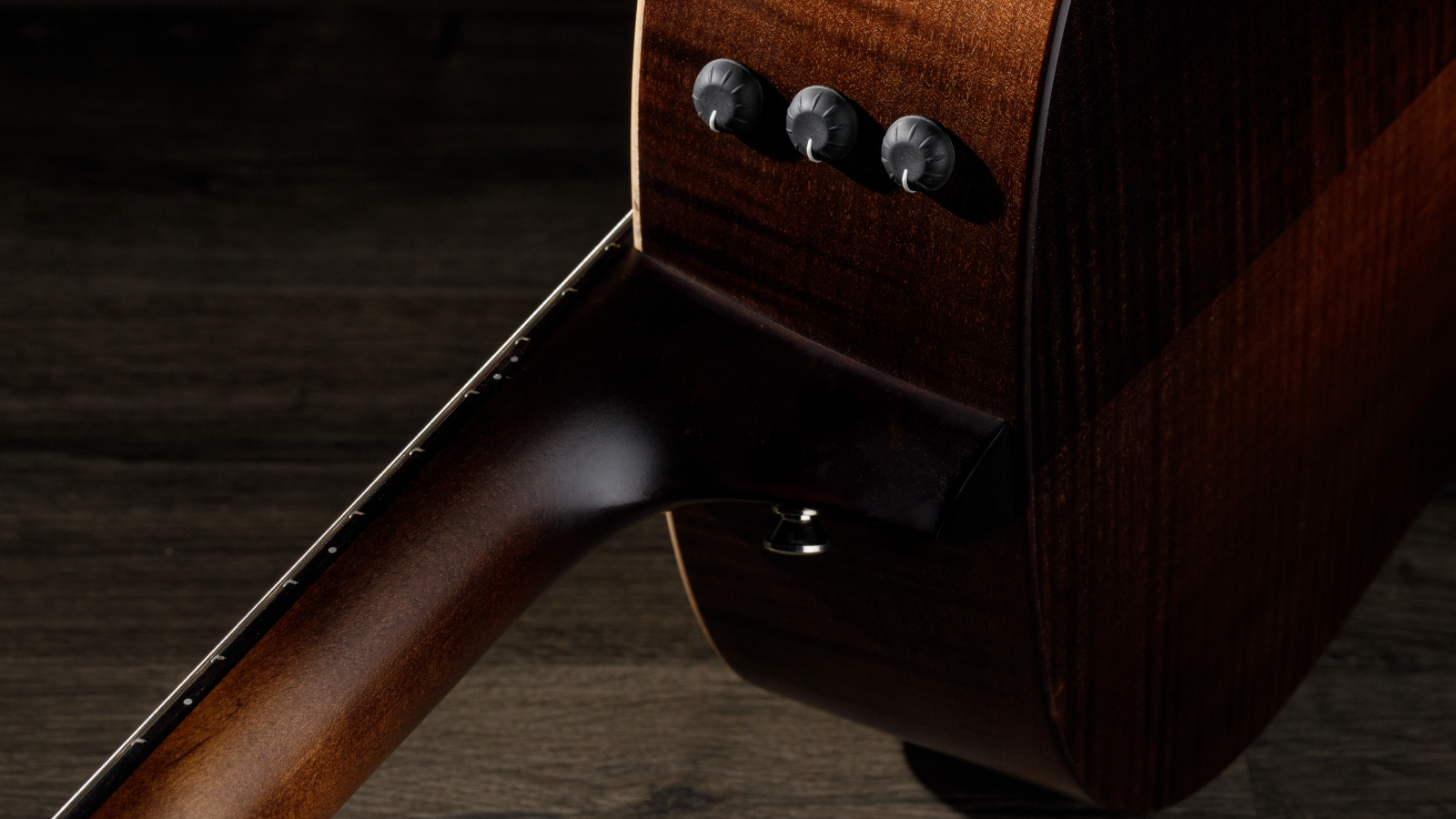
Powers’ point is well taken, and it played out over time. The more familiar we became with the Flametop, the more the whole concept came into focus. The weathered look of its shaded edgeburst Woodsmoke finish and satin sheen perfectly matches the dusky, gritty tone.
Powers had already taken the Taylor sound into new territory with the original Grand Pacific, the first Taylor designed to deliver a warmer sound via a classic, soft-shouldered-dreadnought body style reminiscent of a Gibson J-45 miked-up in a Nashville studio. But that’s still a high-fidelity instrument made for discerning players.
“AD signifies the American Dream Series," says Andy Powers. "The 2 indicates a hardwood top, which in this case is maple, as opposed to a softwood top such as spruce, which would be designated by a 1. The last digit, 7, signifies the Grand Pacific body shape, and the e means electronics. Finally, Flametop means that this model has a flame-maple top.”
Then came the more workman-like version in the form of the original American Dream, the AD27e, with its more fundamental tone.
The Flametop takes another giant step away from traditional Taylor turf, venturing further to a place that’s downright funky and down home on the back porch.
For a second opinion, we ran it past a pair of trusted ears belonging to the owner of the local recording studio. He’s a good-ol’ southern boy who typically eschews Taylor guitars on account of them being “too bright.”
He took one solid strum of the Flametop and proclaimed, “That’s my favorite Taylor ever.”
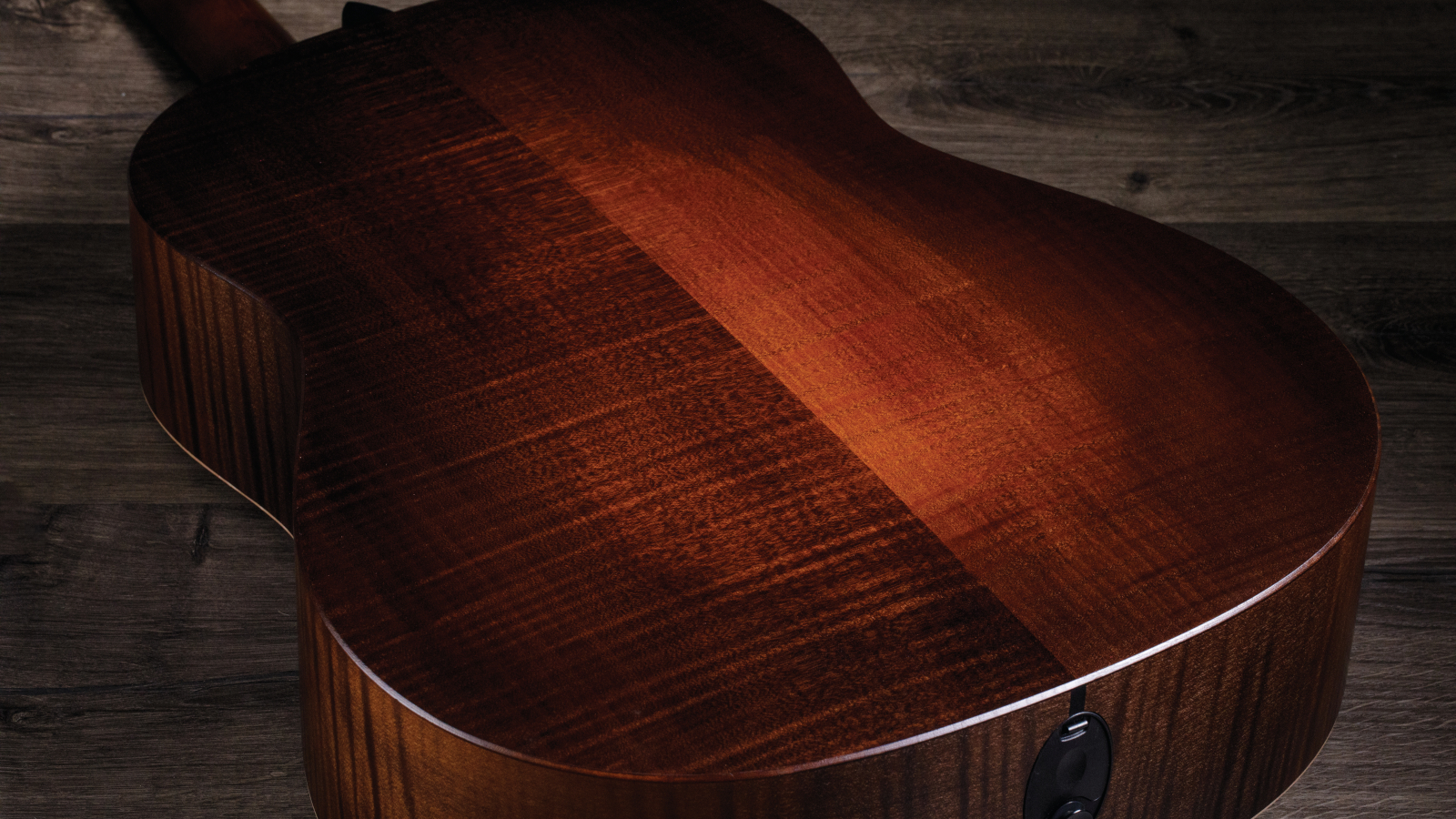
Specifications:
- NUT: Black Tusq, 1.75” wide
- NECK: Tropical mahogany
- FRETBOARD: Eucalyptus, 25.5” scale
- FRETS: 20 medium
- TUNERS: Taylor nickel
- BODY: Solid maple sides, back and top. 20” long, 16” wide 4 5/8” deep. V-Class bracing
- BRIDGE: Eucalyptus with Micarta saddle
- EXTRAS: Taylor AeroCase included
- ELECTRONICS: Taylor ES2 with volume, bass, and treble controls
- FACTORY STRINGS: D’Addario Nickel Bronze Light .012-.53 (non-coated)
- WEIGHT: 4.4 lbs (as tested)
- BUILT: USA
Visit Taylor Guitars for more information.
Jimmy Leslie has been Frets editor since 2016. See many Guitar Player- and Frets-related videos on his YouTube channel, and learn about his acoustic/electric rock group at spirithustler.com.
“I felt myself starting to cry.” Eric Clapton’s 'MTV Unplugged' Martin acoustic returns in two guises. But Slowhand’s affinity for the guitar brand began long before that seminal live performance
"I have a Mercury on the guitar now, which makes me very happy.” Brian May’s new signature Gibson SJ-200 features a subtle tribute to the late Queen singer Freddie Mercury
